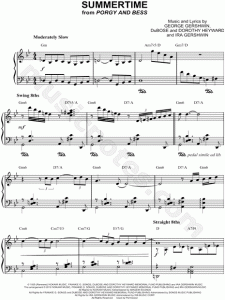I decided since it is Black History month, to listen to a famous songwriter and saxophonist, Charlie Parker. Playing mostly jazz music, most of his songs are still popular and played today like “Now’s the Time.” Since I heard that song, and most of my classmates, I wanted to hear something different. Jazz music was something I wasn’t exposed to as much until came to Lehman, but Parker was someone I was familiar with. He was born August 29, 1920 and started performing as saxophonist since he was 15. Parker grew up as an only child and found his talent in music through lesson from school, transitioning from the baritone horn to the alto saxophone (the sax was given to him by his mother when his father abandoned them). Dropping out of school at 15, Parker was determined to make a career as a saxophonist that he played in clubs where he lived, Kansas City, Missouri. He played in clubs until he joined a band with a pianist that had the group tour in places like New York and Chicago. Since he chose to stay in New York, Parker became a part of different groups that allowed him to make his first recordings, his own solos in those recordings, met other upcoming jazz musicians, and became a leader in his own group. Unfortunately, his music career wasn’t as long as it could’ve been since he died in 1955 due to his history of alcohol and substance abuse.
Out of all the music he played or has written, I enjoyed listening to “Summertime”. It begins with a string section introduction, which is different considering only the double bass is popular in jazz music. Right after, you hear the harp play a repeating melody, almost like a scale, and the remaining instruments (bass, percussion) join in the music, leaving the saxophone as the solo instrument. The song is short but consist of harmonies between the saxophone and another instrument such as the harp, strings, and piano. The tempo of the song is slow or moderately slow but then turns into a swing motion in 8ths, which is common in jazz music.
A little fuzzy to read but below is the first page of sheet music of “Summertime”. The music is written for only a pianist to play the notes and sound is similar to the ones you hear in the video below. The saxophone solo plays a certain pattern with a similar sound heard at least three times throughout the whole song, like a melody, and then follows with the other instruments playing their harmonious section, repeating the same thing. The harp plays a repeating glissando melody, the strings play a harmony in both pizzicato and acro, and you hear the piano for a brief moment.

I enjoyed listening to this piece and learning more abound Charlie Parker. It was unfortunate that he lasted in the music industry in such a short time but I think he enjoyed the journey of being exposed to it while he was still alive. Even though he didn’t composed this song, there is no denying he was a great saxophone performer.
Reference links:
http://www.biography.com/people/charlie-parker-9433413#early-life
http://www.cmgww.com/music/parker/home.html


HI Amber,
Sorry for not commenting on this right away! I’m glad to hear that you’ve discovered Charlie Parker. Can you tell me what recording you listening to and who else played on it? That’s usually really important when we talk about Jazz since many performers made multiple recordings and we’re often interested in comparing their performances and how they react to the others with them.
This is a really lush performance, but Parker’s tone is quite brilliant and cuts through, doesn’t it?
Did you read at all about Parker’s legacy? His nickname, and his local connections with New York City?
I was listening to the 2nd track, “Summertime (Jazz Instrumental). Sorry, when I copy and paste the link I didn’t realize it would be all 26 songs. I forgot to mention his nicknamed “Yardbird”, mostly because the only reason why he had it was either his personality or the way he played, there was no clear reason for the nickname but it suits him.